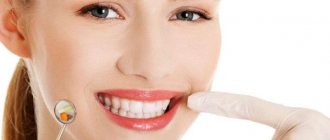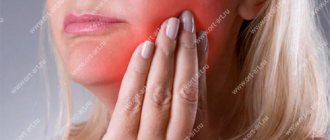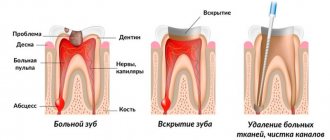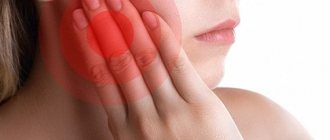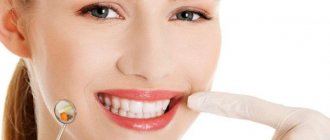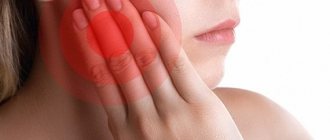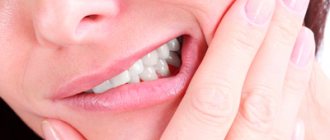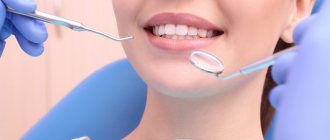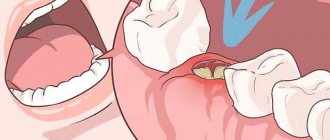Causes What to do about pain?
Home Remedies Dental Care Prevention Having completed treatment, we leave the dentist's office with a feeling of relief. Then the effect of local anesthesia ends and it is discovered that the tooth hurts after the filling. There is no reason to panic and immediately make an appointment. Pain is a natural reaction to medical intervention:
- To prepare a tooth, it is drilled. Nerve endings in hard tissue react to this process by sending pain signals to the brain. The deeper the drill went, the more painful it was.
- When the pulp (nerve) is removed, adjacent vessels and nerve endings are injured.
- The antiseptic used to treat the cavity has a strong irritant effect. It can get into surrounding tissues, causing discomfort.
This kind of pain goes away on its own within up to 2 weeks.
. The main feature: the unpleasant sensations gradually subside and disappear.
What else causes toothache under a filling?
Sometimes, the tooth continues to hurt or causes discomfort. This may be caused by medical error:
- The dentist overdried the dentin, causing a burn. The tooth reacts to temperature stimuli and tapping.
- Dentin was not dried enough. An air gap with negative pressure appears between the filling and the wall, which causes pain.
- When treating deep caries, the doctor damaged the pulp chamber, pathogens penetrated into the pulp and caused inflammation - pulpitis.
- The filling was placed incorrectly; it irritates the gums, causing swelling, redness, and pain.
A broken instrument, too much or too little filling material, allergic reactions to its composition also lead to unpleasant sensations.
Potential Causes of Pain
In most clinical cases, the cause of pain and discomfort is medical error and non-compliance with treatment technology.
Possible reasons:
- Errors during the preparation of a carious area: overheating of the dentin, perforation of the bottom or wall of the carious cavity, breaking off the wall of the carious cavity, damage to neighboring teeth by the bur or damage to the gum edge on the neck of the tooth. What method can be used to correct the situation depends on the type of error made. As a rule, the tooth is re-treated and filled again.
- Violation of filling technology by a specialist.
- Incomplete grinding of the filling. In this case, the installed filling rises slightly above the walls of the tooth; when the jaws are closed and chewed, another tooth puts pressure on it. As a result, the filling puts pressure on the pulp, causing irritation of the nerve endings and pain. The pain can only be eliminated by additional grinding of the filling to the required size.
- Overdrying of the carious cavity. Before filling, the tooth walls are thoroughly dried with a stream of warm air. This is necessary so that the filling material is well secured and subsequently the filling does not fall out of the tooth. Excessive drying sometimes damages the nerve endings located in the surface layer of dentin. This causes pain and is fraught with the development of inflammation of the dental nerve. The correction method is removal of the filling, removal of the nerve and filling of the root canals, installation of a new filling.
- Insufficient drying of the carious cavity. In the presence of moisture, the filling is not firmly fixed to the walls of the tooth. As the filling material dries, it decreases in volume and the filling literally “lags behind” the walls. As a result, voids form between it and the walls of the tooth and irritation of the nerve endings occurs. After a short time, the filling usually falls out. The situation can be corrected with a new filling.
- Allergy to components in the filling - in this case, only new treatment using other materials will help. In addition to pain, allergies are accompanied by a rash, redness of the skin, swelling, and the gums at the treatment site may swell.
- Tissue infection followed by inflammation. During treatment, an infection enters the tooth cavity and provokes inflammation of the nerve endings. This process is called pulpitis. Its characteristic feature is severe acute pain, which occurs for no apparent reason and intensifies at night. In an advanced stage, pulpitis turns into periodontitis and provokes the formation of a cyst. Therefore, if acute, persistent pain appears, you should consult a doctor as soon as possible.
In most cases, a specialist’s mistake can be corrected without serious complications or consequences for the patient. The earlier the pathology is identified, the higher the likelihood of its successful elimination.
Pain after caries treatment is a fairly common phenomenon, and this is its insidiousness. Often, patients cannot recognize the presence of complications in time and turn to a specialist only when the complication reaches the acute stage and provokes concomitant diseases. Therefore, if pain occurs, it is better to consult a specialist once again than to endure and wait.
What to do if your tooth hurts after installing a filling?
You should pay attention to the nature of the pain. If it is aching, tolerable, and is not associated with food intake, then the chances are high that everything will work out on its own.
You should worry if:
- The pain is throbbing, increases towards night, the sealed tooth with the nerve hurts - this indicates inflammation of the pulp.
- Unpleasant sensations appear only when biting or pressing on the filling - most likely, the filling technology is broken.
- There is a feeling that the tooth is sticking out, there is discomfort when chewing - the filling is too large.
- The mouth burns, the gums hurt, the mucous membrane turns red and swells - signs of an allergic reaction.
- The pain does not decrease, but may intensify. The gums swell, general malaise appears, and the temperature rises. These symptoms indicate that periodontitis is developing.
Pain after CARIES treatment.
Normally, slight pain may occur when pressing on the filling.
, when a hard piece of food gets on the tooth while eating, or when running a fingernail or toothpick over the filling. Painful sensations more often occur after treatment of deep caries: the bottom of the carious cavity is close to the “nerve” of the tooth, and the placed filling, when pressed on it, transfers pressure to the tooth pulp. Over time, these pain sensations will decrease, because... The tooth pulp will develop a protective layer of dentin and “fence itself off” from the filling. However, this takes some time, and the discomfort when biting on a tooth can last up to several months.
Slight dull pain
in a tooth it can also be quite normal. In some patients, this is an individual reaction of the tooth to the doctor’s intervention (mechanical treatment of the tooth with burs, medicinal treatment with antiseptics, “exposure” of the filling with a halogen lamp, etc.). Such pain should not persist for more than 7–14 days.
Acute pain is not considered normal
, spontaneous (causeless) attacks of aching pain, especially at night. If you experience similar sensations after caries treatment, you should consult a doctor for an examination and, possibly, additional procedures.
If the filling is located in the cervical part of the tooth (near the gum), then the tooth may react to temperature stimuli
. In this case, it is important to pay attention to whether there is an overhanging edge of the filling in the gum area (i.e., a step or gap between the edge of the filling and the tooth). If such an unevenness exists, it can injure the edge of the gum, the gum can become inflamed and expose the root of the tooth. And, as you know, the root of the tooth is not covered with enamel and is very sensitive to any irritants. Therefore, if you notice that after treatment of cervical caries or wedge-shaped defect, the gums of the tooth become inflamed, and the tooth reacts to cold or sweet foods, then consult a doctor immediately.
How to help yourself at home
All home remedies that are recommended for use if a tooth aches under a filling reduce the symptoms, but do not eliminate the cause. These measures are temporary and are applied until you see a doctor. The only exception is natural pain after a filling has been placed.
Pharmacy painkillers will help you relax and sleep. Rinsing with salt or soda relieves irritation. Infusions of herbs, calendula, chamomile, and sage have a disinfectant and anti-inflammatory effect.
Modern dentistry has a negative attitude towards such traditional medicine as a hot compress. This can increase inflammation, cause bleeding and a purulent process.
How to eliminate pain
If a tooth under a filling hurts when pressure is applied, it is advisable to immediately consult a dentist. He can give the necessary recommendations or immediately begin to quickly eliminate the problem. In any case, timely contact with a doctor helps prevent possible complications and relapses. To determine the cause of pain and choose the most effective treatment option, you will need a full dental examination. It may include electroodontometry, cold testing and x-ray examination.
If it is temporarily impossible to visit the dentist, it is recommended to resort to painkillers. However, this solution is temporary. To completely eliminate the problem, you will still need to visit a doctor.
As a result of a dental examination, the doctor may recommend several procedures that will relieve pain at home. Firstly, the patient may be advised to regularly rinse the mouth with warm water, which has been infused with herbs, as well as painkillers and antiseptics. Secondly, you may need to regularly rinse your mouth with soda, iodine, salt and agents such as Chlorhexidine or Furacilin. Thirdly, to eliminate toothaches under a filling, applications with infusions of propolis, chamomile and other plants with an anti-inflammatory effect are often used.
Finally, clove, camphor or fir oil can be used to relieve pain. You just have to keep in mind that these products can cause burns. Therefore, they should be used with extreme caution.
Treatment in dentistry
If you experience severe, increasing pain, you should immediately consult a doctor. Also, you should make an appointment if your tooth ache after filling, although about 2 weeks have passed. The dentist will conduct an examination and order an x-ray examination. An examination will determine whether the filling is in the way. If so, the doctor will simply sand the surface.
The picture will show what causes discomfort:
- periodontal inflammation;
- pulpitis;
- tool fragment.
In this case, the tooth will have to be refilled. The old filling is removed and the reason why the filled tooth aches is eliminated. The duration of treatment depends on the severity of the defect. A piece of the tool can be removed in one go. Severe inflammatory processes will require several visits and endodontic intervention when the canals are re-treated.
If, after installing a filling, a tooth hurts as a result of an allergy to the material, it is replaced using a different composition.
Tooth hurts after filling
If your tooth hurts after a filling for just a few days, then don’t panic! Provided that the pain is not severe, does not arise on its own, but from external factors (during meals, as a reaction to hot/cold), such pain can last up to two weeks. This depends on the individual tissue’s ability to regenerate after the intervention.
The most common reasons that are responsible for toothache after filling:
- Traumatic pain (overheating of the tooth): When preparing a tooth for filling, there is a chance that the tooth's pulp may experience a sudden shock, and this may be the reason why the tooth hurts after filling. If such toothache persists, then, most likely, you will have to treat the root canals.
- Referred pain: The nerves of nearby teeth may carry signals from the nerves of the filled tooth. That is, teeth that were not involved in the treatment process may also hurt.
Misdiagnosis: If there is no correct diagnosis, then there is no correct treatment. This most often happens when the doctor neglects radiography. But there are also borderline cases when the doctor, trying to preserve your tooth as much as possible, uses the least invasive (traumatic) treatment. Sometimes it is worth it, but the result of treatment is not guaranteed (the patient is usually warned about this).
Each person is unique, and the body's response to treatment is always individual. Pain is a normal reaction to external intervention, although we try to minimize it.
Memo for patients
- Do not delay visiting your doctor if there are signs of an allergic reaction.
- If the pain increases, swelling, redness, or fever appears, make an emergency appointment
- Do not relieve pain with antibiotics unless prescribed by a doctor.
- Do not use alcohol or garlic applications, as they can burn the mucous membrane.
- Never heat your tooth
- Follow all dentist recommendations
A qualified doctor, a clinic with modern digital equipment and following the recommendations will help you avoid situations where a tooth hurts after installing a filling.
Expert of the article Bolshakova Evgenia Vladimirovna Dentist-hygienist
More than 11 years of experience
If your tooth hurts when you bite
Most often, it is not possible to catch caries in the stain stage, when it has affected only the top layer of dentin. Because once caries appears, it develops rapidly, quickly penetrating into the dentin of the tooth. And the deeper the caries penetrates into the dentin, the more serious intervention is required during treatment.
If a tooth hurts when biting after a filling, this may be a short-term reaction to the deep preparation. In this case, the pain should go away within two weeks.
In the image of the tooth, you can see that the dentin is directly adjacent to the pulp. The pulp is the very place where pain originates, even with the slightest impact. Therefore, pain when biting can occur when the filling is not polished sufficiently. In this case, when you bite, with another tooth you put pressure on the filling that is too high in the bite, and the filling, in turn, physically affects the pulp, and then the tooth hurts under the filling.
Many people think that they can wait a few days and the filling will wear itself out. This is not true; a filling that is too high in bite size injures the surrounding tooth tissue, which may lead to the need to re-treat the tooth, and possibly even to removal. And why endure this unexpected sharp pain if you can ask your dentist to further polish the filling? This is an absolutely painless and quick procedure.
Also, pain in the tooth after filling when biting may indicate inflammation of the surrounding tooth tissue. If you do not feel the filling, but the pain becomes more frequent and stronger, then you need to contact your doctor to determine the exact cause.
If the pain bothers you for more than two weeks or becomes unbearable, you should immediately contact your doctor.
It may be necessary to place a filling on the tooth using a different material to reinstall it. The dentist may decide to place medication and a temporary filling.
